Interview: Karen Kaeja, Allen Kaeja, and Bruce Barton of 31: TOUCHX and I AM THE CHILD OF at Harbourfront Centre
New works by venerable dance company examine our needs for touch and storytelling using AR
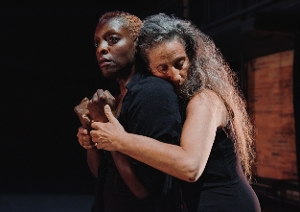
Renowned Toronto dance company Kaeja d'Dance, winner of the 2019 Dance Ontario Lifetime Achievement Award, brings the premiere of two new works to Harbourfront Centre from November 11-13. The company, now in its 31st year, presents 31: TOUCHX and I AM THE CHILD OF as part of Harbourfront's Torque series.
TOUCHX, choreographed by Karen Kaeja, examines our need for human contact; professional dancers and community volunteers interact to explore the effect of both wanted and unwanted touch on the body and soul. I AM THE CHILD OF, choreographed by Allen Kaeja, employs Augmented Reality technology and live filming by the dancers to present a meditation on formational childhood memories that can be viewed simultaneously on the stage and from multiple perspectives via the audience's mobile devices.
BroadwayWorld Toronto spoke to choreographers Karen and Allen Kaeja, as well as collaborator Bruce Barton of Vertical City to find out more about what audiences can expect from these unique works.
BWW: Could you start by telling me a little bit about the inspiration behind these two very different projects?
KAREN KAEJA: TOUCHX has been in gestation for 7 years, and it has gone through many different iterations. It's based on the concept of touch, the fragility, the vulnerability, the self-exposure, the many many many layers and aspects of the concept of touch, which is something I've been working with my whole life in different ways through my physical practice, just thinking about and talking about and writing about it.
So that is the simple answer. It has 8 dancers, a professional company dancers, 8 school of Toronto dance theater, graduating class dancers, and 20 community dancers, many of whom have been working with me for years and years on different community oriented workshops and projects. Now this is the first time bringing all these people, both community and professional, together on stage in my work.
BWW: You're using both professional dancers in conjunction with a significant number of community dancers, who are intergenerational volunteers from many different communities. What sort of concepts are you exploring by using this relationship between the volunteers and the professional dancers?
KAREN: There's a variety of people in my work, a range of ages, and people from all walks of life. So the practice that I was doing was how to integrate all of those humans in the room in terms of the agency of touch. To be able to say yes or no. How do we work together in the framework of today, in order to be able to have that witnessed by an audience?
BWW: When you say the ability to say yes or no, you mean in terms of accepting or rejecting forms of touch.
KAREN: Exactly. Mostly in my work, it's in super simple forms of suggestion, such as holding hands. It's right down to its baseline. There's so much to be read and said by witnessing what is occurring in the body in the moment. So the sections with the community dancers integrated with the dancers, there is absolute agency for touch. Sometimes it's asking permission, and sometimes there is absolute going for it.
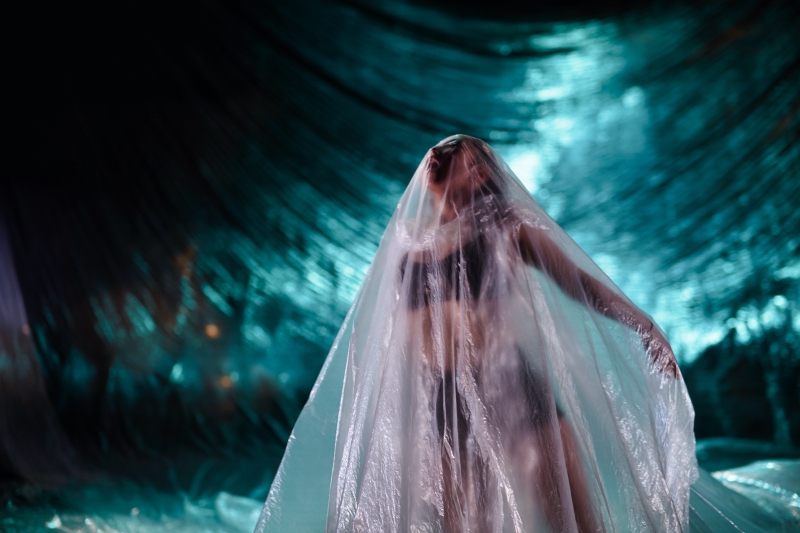
BWW: Allen, can you tell me a little bit about your inspiration for your piece, I AM THE CHILD OF?
ALLEN KAEJA: Bruce and I are co-creators and collaborators on the piece. I AM THE CHILD OF came out of a political post that I did back in 2015, something that I rarely ever did on social media. At that time period there was this conflict between two battling people for Prime Minister, Harper and Trudeau, and one of the things that Harper brought to the forefront, wanting to be divisive, was that the refugees from Syria should not be allowed into Canada. I suddenly was driven to write this post.
That said, I am the child of a refugee. My father was a Holocaust survivor whose entire family was murdered, like everyone who stayed in Poland, including his first wife and child, anyone who was alive in his family, had left before the war. He was in Auschwitz for two years, as well as Nordhausen. And then he went to the Deggendorf refugee camp or displaced person's camp, and while he was there he started writing relatives. In Canada, his one relative said, look anywhere else in the world because they don't want our kind here. My father said, if you can't sponsor me now, I'm afraid I'm going to be here for three years, which he was, almost to the day.
But the governments changed. My father came over and he did what every refugee does. He built a world, he built a business, he built a family. My father was actually made an honorary police officer when he passed, because of the impact of the work that he did for the community. Not just the Jewish community, but the community as a whole because that's what refugees do: they build worlds. They build countries. So that was my impetus. Now I have been creating Holocaust-inspired work for almost 30 years.
BWW: It's quite meaningful that this piece is being premiered during Holocaust Education Week.
ALLEN: When Bruce and I started the piece 5 years ago, I thought, I'm not the only person with this impactful story, right? I wanted to start to gather together a community of dancers to share their stories and their experiences. And ask, how do we dance our personal story? And then, how does our personal story interact with and elevate and brace each other's stories?
BRUCE BARTON: I think the one of the important parts for us was that the dancers' voices be present in the piece right from the very beginning, and voice is an element that's used now increasingly in dance work, but is foreign to many dance contexts. One of the things that we did early on was try to figure out all the different ways that the dancers' voices could be present in the piece. In early workshops we had multiple residences, and particularly in the work in Banff we were working with the dancers to begin to think about their voices as another tool and another instrument to work with, as opposed to something that is distracting and separate from dance. We were also encouraging them to write, in a carefully structured and safe context, about aspects of their lives that they thought were perhaps transformative in one way or another.
So the idea of I AM THE CHILD OF we were trying to get at was, what are those moments? What are those influences, those events in your life that you feel have been definitive, that shaped who you are? Over the years, the dancers have done a great deal of writing, which we've honed and refined down into a single memory or point in their lives that they feel was particularly significant for them, and that piece of text now lives within the performance in a variety of different ways.
There is spoken text within the work, and there is something that we're really excited about is that the entire soundscape, created by Edgardo Moreno, is quite complex and made up of recordings of voices. There's actually no musical instrumentation, either acoustic or electronic, in the piece, apart from their voices being manipulated.
Beyond that, the stories have also been used as emotional foundations for virtually all the physical exchanges in the piece as well, as the offerings that the dancers were bringing to each other. In many ways, the piece is about the way that we present ourselves to one another, the ways that we see one another, and how the way someone sees us also shapes us. It's about the ways in which we bring those particularly important stories about ourselves into relationships with us. That is alive throughout the piece in on so many levels, both tangible and intangible, that it's it really the defining dramaturgy. Not only our life lived, but how do we perceive other people's lives?
ALLEN: Bruce and I have been working together now for a decade. Edgardo, our composer, we've had a 30 year relationship with, and Karen and I, of course, have been together for almost 40 years. These are some long-running, artistic, lifelong collaborations.
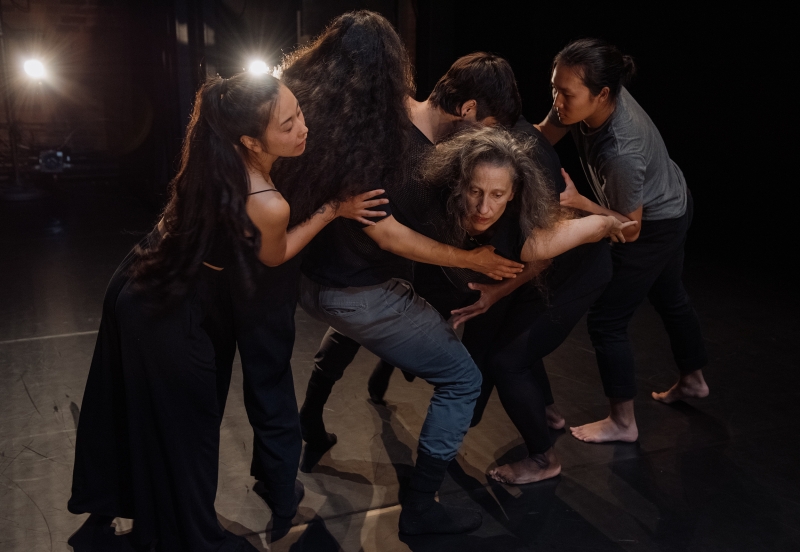
BWW: Speaking of collaboration and these sort of long running collaborations, in this production you're collaborating with a more than two dozen fellow artists in the design, choreography, and storytelling of the piece. Can you talk a little more about the nature of this multifaceted collaboration, and how you're bringing together the ideas of so many different artists?
KAREN: In TOUCHX I have worked with a few hundred people within the gestation of the work, that being professional dancers in Toronto, Moncton, Calgary, and Japan, and done different explorations, continuing to seed the work. All of those dancers and community members that I've worked with in Toronto have really left a trace of themselves in the work, no matter who in the end is performing it. So there have been some dancers that have changed position. New dancers have come on. New community members. I also invite everyone to bring in their own gestures. There's a collaboration in the material.
There are three community members who have passed away that I've worked with, that were involved in the work. Traces and gestures of theirs are still in the work. I also pull material from my dancers. I inspired them to create the material with me, and I shape it towards what is speaking to me.
In terms of the other collaborators, the lighting designer, Simon Rossiter, we've worked with for years. He knows me, my work, how we communicate, how we breathe, how we say, "Oh, hey!" and what that means. When you've worked with people for a long time, you begin to read each other's body language, and you find a flow together. I've been really fortunate to have amazing collaborators.
This is my second project with Gregory Harrison, who has composed a really stunning score. We've been working together for two years on this project specifically, and he has taken some of my writing and integrated it into the song, in conjunction with a female singer who has brought more words to it. Some of the company dancers are also singing live. Their voices are on the recording, and some of them are singing live in the work.
ALLEN:Collaboration has so many different iterations and complexities within it. Bruce and I are equal voices in this whole creation. Even the dancers I give more prompts for their creation as opposed to saying, "do this, do that." That's not my way; it's about inviting their physicality, their sensitivity, their highly attuned physical connection with each other. And so they're building the dance as much as I am. In the process, two hours before we go up, the dancers are creating one of the sections of the dance. They don't even know who they're dancing with two hours before. Other sections are structured improv, and then some of the sections are set choreographically. We've married all that together.
We're also giving the audience agency, so the audience in a sense, becomes collaborator in how they want to experience the performance as well.
BRUCE: I think one of the real strengths in Allen's work is the way in which he's really great at creating these task-based frameworks, which have very specific parameters, but which have lots and lots of flexibility for interpretation. My job is to help the dancers understand emotional or even philosophical orientations within the work, which motivates and provides a grounding and a way to make use of their own source material within the piece.
We're providing tools for the dancers to be really creative on their own and highly dependent upon each other. Although there is some solo work, in the piece it's primarily duets and quartets, and so they're relying upon each other for inspiration. We never really know in any given night what it's going to look like, and we're constantly amazed and surprised by the work that emerges.
In the case of our sound designer, he's also performing every night. He didn't just create something that runs over the evening, although there are pre-recorded elements of it just like there is set choreography within the piece. There's also a lot of improvisational work within it as well, where he's responding to what the dancers are bringing in that moment. Collaboration runs right through to the moment it meets the audience, and then continues.
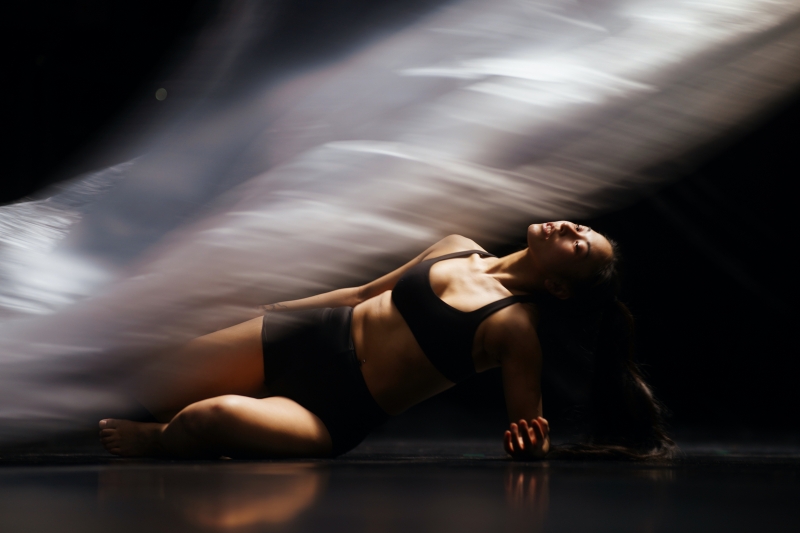
BWW: Can you speak a bit more about how the audience has agency in how they experience the performance?
BRUCE: We're providing the audience with access to multiple visual and sensory portals into the work. between the AR work and the live-streaming that's happening in the piece.
ALLEN: I have 13 dancers, eight that are live, and five that are augmented reality. The dancers are interacting with their AR as much as they're interacting with each other. This is part of my work with Toaster Lab as well, that are cutting edge AR/VR technologists in the world today, but they've never done anything like this, which is also equally as exciting.
BWW: You've said that this is the first fully staged dance production in Canada to integrate augmented reality. How does it use technology to give us this range of different perspectives through dance?
ALLEN: We're inviting the audience to bring their devices fully charged into the theater, and before my piece, which is the second piece on the program, in the lobby they're scanning QR codes. They're taken to a particular page that gives them the options of the multiple cameras that are we are using and the AR trigger. The audience has a choice: they can experience the dance live without a device, which is really powerful, or they can harness their device and watch it with the full integration of the digital technology. Or, they could look over someone's shoulder to see what they're perceiving.
BRUCE: We've worked really hard to make sure that's authentically significant in that it relates to what the entire piece is about, not just a novelty or something that gets added on for an extra spectacle. It's also in combination with three other portals on the interface of the phone or tablet, which provides access to cameras that the dancers are using on the floor. At multiple points you can watch it from where you're sitting, but you can also watch it from different dancers' perspectives. You can watch it from all four perspectives at the same time in order to have this sort of surround experience, of the event that's happening on stage. The idea is to invite them into the curation of the event.
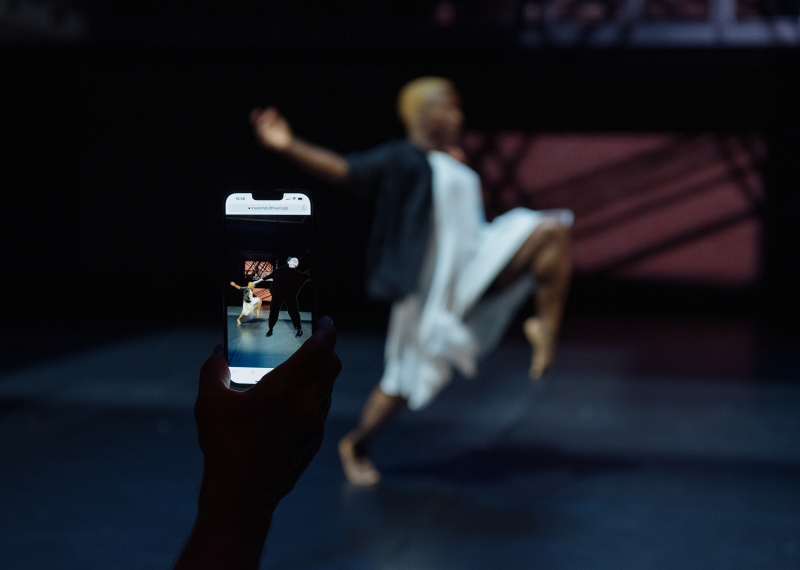
BWW: It's interesting to see this through the lens of pandemic art, even though you've been working on this for quite some time. Though these are both pieces about connection and about co-creation, and relationships between people, TOUCHX seems to be focused on physical contact, something that we missed acutely during the pandemic, and that concept of being in a room together. Then, I AM THE CHILD OF embraces the notion of technology's relationship with art and performance, using live technology in a way that gained momentum during the pandemic to investigate perspective. But it's also something that ultimately puts a layer of technological mediation between the audience and the dance while connecting them. How has the pandemic affected the development of these pieces?
KAREN: I think that, osmotically, there are shifts, and changes in the way that we work and the directions that we're headed, that even though they're very different have confluence. For sure, my piece has changed a millionfold, as it was explored for four and a half years prior to the pandemic. Now, it has pushed me and challenged me to stay open to, and notice and be responsive to, what the implications of touch are now.
ALLEN: I would say that Karen and I actually were involved with these other big technological projects back in 2017, where we were already immersed in Zoom. I knew from my first day of rehearsals that I wanted to work with this idea of multiple perspectives, with the audience having agency. But then the AR came in, when Karen and I received a grant to do Artworx, the celebration of Toronto. We had done all this work in laneways, and then the seventh wave shut everything down, and we said, well, we still want to experience the dance in the laneways. I not only want us to be able to see the dance, I want people to interact with the dancers. How do we get them to dance with the dancers?
That was about a year and a half ago, when I thought, we need to create AR in the laneways for people to chance upon and dance with. Because many of the dancers we work with were in the cast, that's where this whole idea came from, to bring this into the stage into the production.
BRUCE: You've hit on a really salient point about where we are three years later, after we are sort of "emerging" from the pandemic. But the pandemic is emerging with us. For quite a period of time, particularly in the theatre world. there was this sense of just holding our breath: it's going to all be over, and we'll go back to normal. What that did for some people, it led to paralysis. We just stopped evolving, and sat at home and waited for something to happen. Then others made this complete jump over into digital technology, often with work that was intended to be experienced live, and that was a very awkward transition as well.
We're three years into it, and what can never be denied is that our entire society has been influenced by that huge reliance of engaging with others through technology, because we didn't have the opportunity to do it otherwise. We either had to stop engaging with other people, or we had to adopt these new technologies. In some ways, our pieces relate to the fact that that this is now a huge part of our world, and we have to really think about how it shapes our relationships. It will always shape our relationships, it has all along. but it was really accelerated during the pandemic.
Rather than see it as an either/or, or some sort of binary, it's really an integrated understanding of the way that we engage with each other. The dancers are engaging with each other directly, physically, tangibly, on stage, and we are present to them the way theater audiences and dance audiences have been all along.
Now, we also have this other element which actually we're quite dependent on in day to day experience. It's become normalized as a part of the aesthetic experience. I think in many ways, for me it's about getting rid of those binaries, and not pretending that we're suddenly out and free of technology. It's a huge part of us.
So let's figure out the ways in which it contributes to our day-to-day experience, and use those things aesthetically and meaningfully, and thematically in the performance.
ALLEN: The dancers are dancing intimately with their ARs; their responsiveness is amazing. There's one point where Mio [Sakamoto] is dancing with mini Mio, and it's just stunning and gorgeous. There's all these interrelationships going on.
BWW: There's an interesting visual metaphor here of the real self interacting with the digital self, thinking about how we present ourselves, and how we have mediated ourselves through screens. Not just for the past few years, but especially the past few years, because we had no other means of connection outside of our bubbles.
ALLEN: 100%. During the height of the pandemic, I would be holding rehearsals on Zoom. We'd have a dozen different windows, but I still had them integrating and responding with each other. So it was, in a sense, a perfect preparation for this process.
BRUCE: We had a couple of really interesting development periods where people were creating together across two screens, or there were three dancers working together across three screens in a creative way. They were highly responsive to each other even though everybody was in their own apartment and in different cities.
BWW: Well, I'm glad that we get to see it all live on stage and that we can experience it in the present, physically. It must be very nice to have the ability to have everybody on stage together.
KAREN: Yeah. It's not without COVID scare, but yes.
BWW: Thank you so much for talking with me; this sounds like a very exciting program.
Photo Credits:
Photo of Nickeshia Garrick and Karen Kaeja by Kevin Jones
Photo of Mio Sakamoto by Drew Berry
Photo of Aria Evans, Karen Kaeja, Ethan Kim, Geanderson Mello, and Mio Sakamoto by Kevin Jones
Photo of Mio Sakamoto by Drew Berry
Photo of Nickeshia Garrick and Karen Kaeja by Kevin Jones
Comments

Videos

